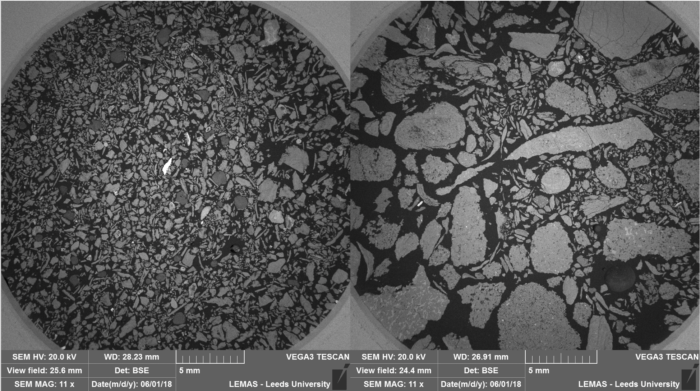- CCS case study
Using cuttings for CCS characterisation
The depleted North Sea oil and gas fields are commonly put forward as the best sites in the UK for carbon capture and storage (CCS). Another – often overlooked – option is the layer of Triassic sandstone, saturated with salt water, that sits above layers of salt under the North Sea. Unlike the depleted oil and gas fields, few cores have been taken from these rocks, which makes them much harder to characterise. But a technique developed at the University by Professor Quentin Fisher from the School of Earth and Environment would allow for characterisation of sites like this in a cost-effective way.
The technique was developed through PETGAS, a joint industry project led by Professor Fisher since 2008, which has created a database of the characteristics of tight sandstone reservoirs and how these affect their petrophysical properties. This allows reservoir quality and productivity of oil and gas reservoirs to be assessed – but is equally useful for assessing the feasibility of a reservoir for use as carbon storage.

SEM images of sandstone cuttings.
Professor Fisher’s innovation has been to use cuttings – the waste from drilling wells – as the basis for this characterisation, rather than being reliant on the more expensive core samples that are more commonly used. By analysing the microstructure of the cuttings, Professor Fisher and his team at Leeds are able to predict the properties of these sandstones and how fluids – such as liquified CO2 – will flow through them. EBN – the Dutch national energy company – has been one of the sponsors of PETGAS since 2008 and is using insights from the project to inform its own CCS planning, as well as geothermal and underground gas storage projects.
Professor Fisher says: “Former gas reservoirs are seen as the obvious choice for CCS, but if existing wells can’t be used, then it becomes less straightforward. It’s difficult, if not impossible, to drill new wells into depleted reservoirs and in this scenario, new sites, like the Triassic sandstones under the North Sea, will have to be found.”
Leeds is also unique in having facilities for a testing procedure crucial to assessing the viability of CCS sites. In the University’s Wolfson Multiphase Flow Laboratory, Professor Fisher and his team carry out mercury injection porosimetry under pressure, which tests rock permeability at realistic stress levels to assess the likely effectiveness of cap rocks for CCS reservoirs. Samples are put under pressures up to 60,000 PSI, before mercury is injected to determine the pressure required for phases such as natural gas and CO2 to flow through the rock.
“By bringing these samples under high confining pressures we can realistically simulate the kind of conditions the rocks will be subjected to within the subsurface,” explains Professor Fisher. “This gives us a better idea of how effectively the cap rocks will seal a reservoir of CO2 and prevent leakages over a long timescale.”
